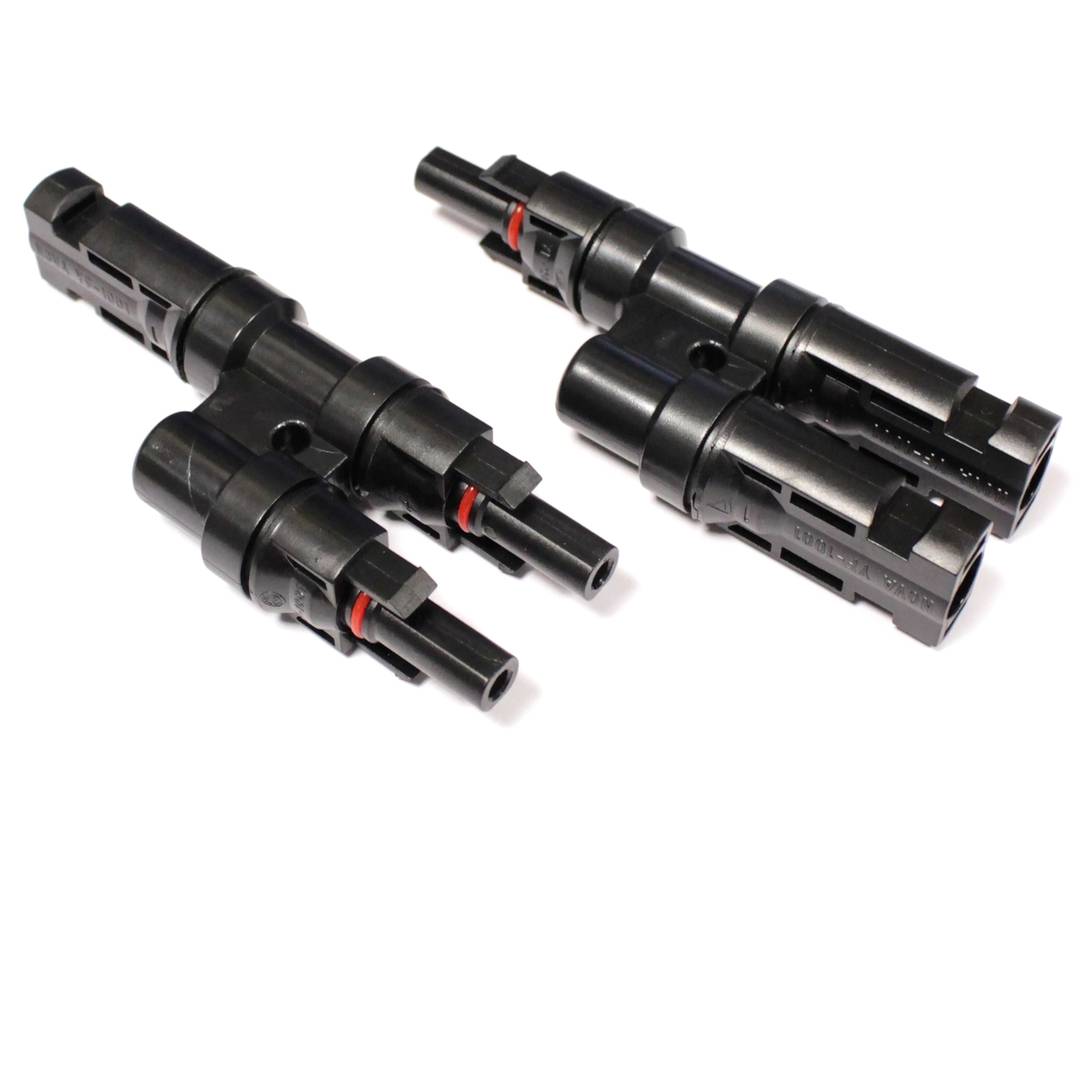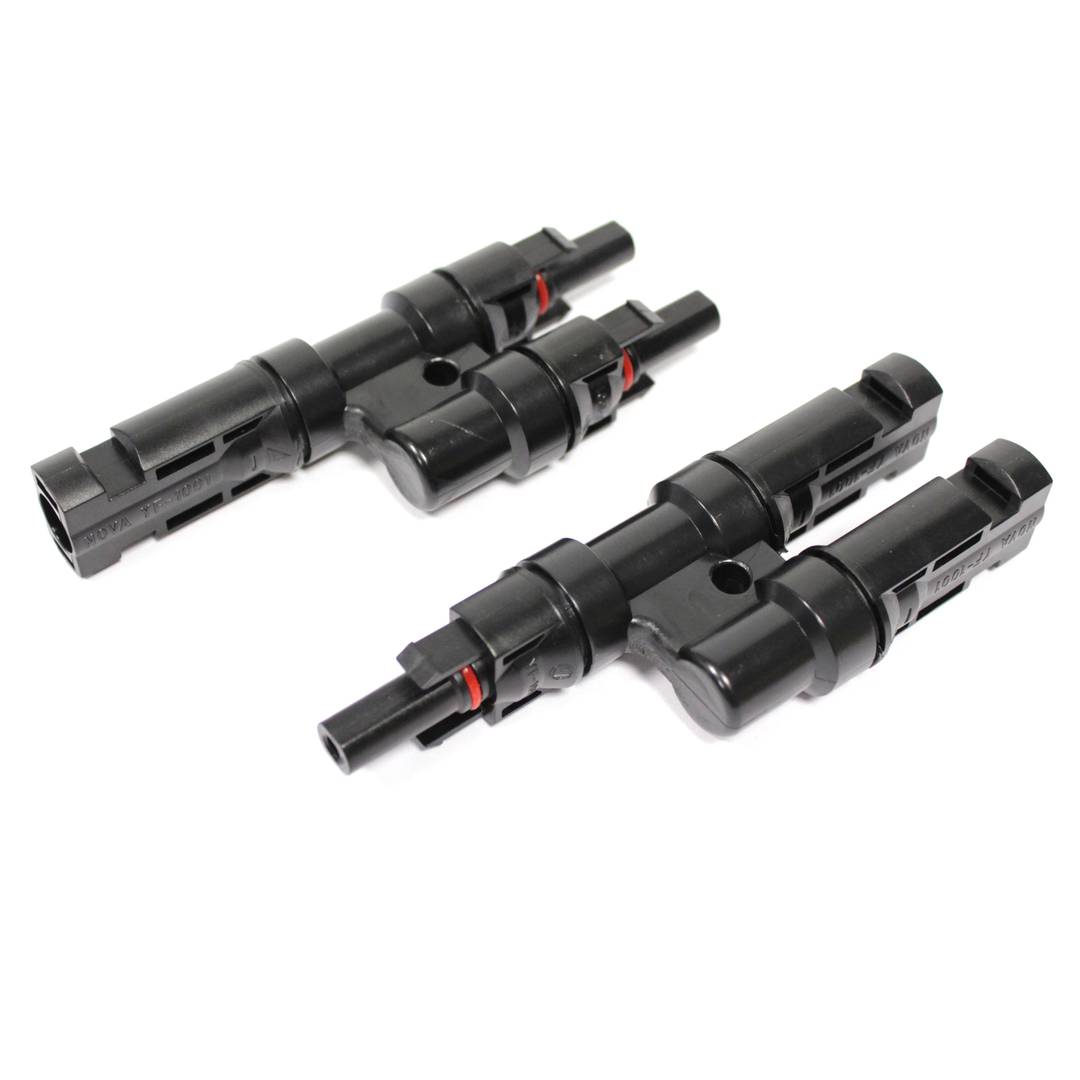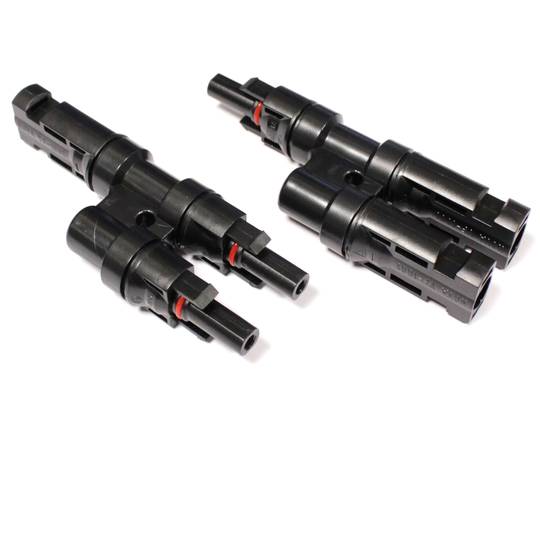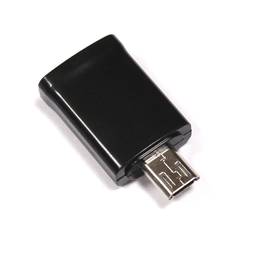04/20/2024 1:44 a.m.
https://cablematic.com/en/products/solar-photovoltaic-cable-connector-compatible-with-pv-mc4-t-25mm2-4mm2-6mm2-SO013/
https://cablematic.com/en/products/solar-photovoltaic-cable-connector-compatible-with-pv-mc4-t-25mm2-4mm2-6mm2-SO013/
Solar photovoltaic cable connector compatible with PV-MC4-T 2.5mm2 4mm2 6mm2
REF: SO013
Specifications
- Connector for photovoltaic (PV) installations.
- MC4-T compatible connector model.
- Compatible with standard 2.5 / 4/6 mm2 section cables.
- Voltage 1000 VDC.
- Intensity: 30A.
PVP
€13.71
Price including VAT:
€13.71
PVD
€11.49
PVP: Retail price.
Check conditions.
PVP: Sale price to distributors.
Check conditions.
warranty
returns
safe
We will notify you when it is back in stock.
Specifications
- Connector for photovoltaic (PV) installations.
- MC4-T compatible connector model.
- Compatible with standard 2.5 / 4/6 mm2 section cables.
- Voltage 1000 VDC.
- Intensity: 30A.
More info
Connector for photovoltaic (PV) installations. MC4-T compatible connector model. Compatible with standard 2.5 / 4/6 mm2 section cables. Voltage 1000 VDC. Intensity: 30A. Class II protection. IP 65 environmental protection. Operating temperature range: -40 to +85 degrees centigrade. Flame retardation: UL94-V0. Insulating material: PPO. Contact material: silver plated copper. TUV / ETL approved.
- Gross Weight: 103 g
- Product size (width x depth x height): 4.0 x 10.8 x 1.9 cm
- Number of packages: 1
- Packages size: 15.0 x 7.0 x 2.0 cm
Technical terms
- Photovoltaics
- VDC
Photovoltaics
Photovoltaic energy is produced by solar radiation using devices called photovoltaic cells. It is ideal for supplying all kinds of isolated houses, shelters, but also can be used to supply electricity on a large scale. We show the operating principle "In a semiconductor exposed to light, a photon of energy starts an electron, creating both a" gap "in the atom excitador. Normally, the electron quickly finds another hole to refill it, and the energy provided by the photon thus dissipates as heat. The principle of a photovoltaic cell is to force the electrons and holes to move towards the opposite side of the material rather than simply recombine in it: thus, there will be a potential difference and thus tension between the two sides of the material,as in a stack "The first ground application of a commercial installation of photovoltaic cell was developed in Japan in 1966. In the picture: 1 - PV Modules 2 - Regulation and Control 3 - Battery 4 - Inverter to power.... 220V















